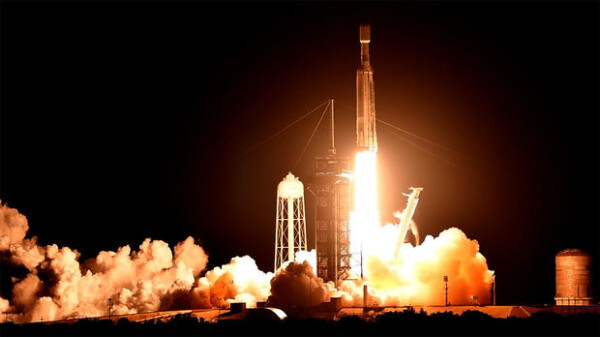
SPACE
SpaceX Falcon Heavy launches powerful ViaSat internet relay satellite . . .
After multiple delays for weather and technical issues, SpaceX finally launched a Falcon Heavy rocket Sunday carrying a competitor's internet satellite, the first of three next-generation data relay stations capable of terabyte-per-second performance.
After a final hour-long delay because of gusty winds, SpaceX's most powerful operational rocket flashed to life at 8:26 p.m. EDT and climbed away from historic pad 39A at the Kennedy Space Center atop more than 5 million pounds of thrust.
Powered by 27 Merlin engines in three strapped-together Falcon 9 first stage boosters, the Falcon Heavy quickly accelerated as it consumed its kerosene and liquid oxygen propellants and lost weight. After initially climbing straight up, the rocket arced over on an easterly trajectory, putting on a spectacular early-evening show for area residents and tourists.
SpaceX normally recovers first stage boosters for refurbishment and reuse, but all of the available propellant was needed Sunday to boost the 13,000-pound ViaSat-3 satellite into its planned orbit.
As a result, all three core stages were discarded to fall into the ocean more than 50 miles below after pushing the rocket out of the lower atmosphere.
The single engine powering the Falcon Heavy's upper stage shut down eight minutes after launch, putting the vehicle in an initial parking orbit. Two more firings were planned over the next three hours and 44 minutes to get the satellite into the planned geosynchronous orbit 22,300 miles above the equator.
src
: https://www.cbsnews.com/news/spacex-falcon-heavy-launches-powerful-viasat-internet-relay-satellite/